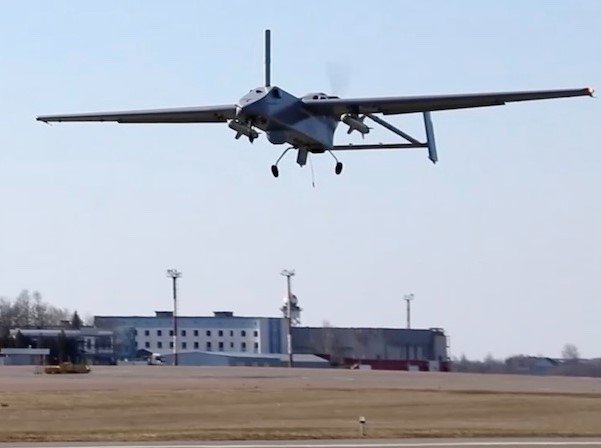A record-breaking aerial assault rattled Ukraine overnight as Russian forces launched 728 drones—both Shahed and decoy types—alongside 13 missiles in what Ukrainian officials called the most intense drone attack of the war so far.
The wave of strikes comes as both air and ground battles escalate across the country, more than three years since Russia’s full-scale invasion began. Ukrainian authorities said the assault targeted 11 regions, with the city of Lutsk, near the Polish and Belarusian borders, suffering the worst of the barrage.
Lutsk Takes the Brunt as Key Military Infrastructure Targeted
Lutsk, a strategically important hub for the Ukrainian military, was hit hard. The city has long been a crucial node in Ukraine’s aerial logistics chain, with airfields that launch cargo planes and fighter jets toward the eastern and southern fronts.
Officials reported that several hangars and aircraft maintenance facilities were damaged, though no casualties had been confirmed by the time of publication. Emergency response teams continued to comb through debris and assess structural damage.
A senior Ukrainian air force officer, speaking anonymously due to the sensitivity of the operation, said the assault was aimed squarely at disrupting supply chains and delaying Ukraine’s aerial support to its front-line forces. “They want to ground our wings before the counteroffensives kick off again,” he said bluntly.

728 Drones in One Night: How Did Ukraine’s Defenses Cope?
Ukraine’s air defense system was forced to stretch beyond its limit as it faced what officials described as a “combined swarm” of attack and decoy drones meant to confuse radar systems. The tactic is not new, but the volume was unprecedented.
The Shahed drones, supplied by Iran and manufactured in Russia under license, have become the backbone of Moscow’s nighttime harassment strategy. On Wednesday morning, Ukraine’s air force reported shooting down approximately 620 of the 728 drones. But with decoys mixed in, the real damage came from those that slipped through.
-
Key targets included fuel depots, airstrips, and radar stations
-
Several drones struck civilian infrastructure, including power substations and railway junctions
-
A temporary communications blackout affected parts of Volyn and Rivne regions
“This was a stress test,” said military analyst Iryna Tkachuk on national television. “And Ukraine passed—barely. But the scale shows Russia is adapting and experimenting in real time.”
A Broader Russian Push: Not Just in the Skies
The drone assault coincided with intensified Russian ground operations along the 1,000-kilometer front line, particularly near Kupiansk, Donetsk, and the southern Zaporizhzhia axis.
Ukrainian generals believe the dual pressure is designed to stretch Kyiv’s already thin military resources. “They’re going for saturation, not precision,” one official said. “If they can’t outsmart us, they’ll try to outlast us.”
At least 12 mechanized Russian battalions reportedly attempted to push forward in the eastern Donbas region, according to Ukrainian military briefings. Most were repelled, but the Ukrainian General Staff acknowledged losses, calling the situation “dynamic and evolving.”
One Ukrainian soldier stationed near Kreminna described the shelling as “constant, like thunder that never stops.” He added, “We’ve gotten used to war, but last night… that was different.”
Washington Reacts with Measured Frustration
U.S. President Donald Trump, who has urged Ukraine and Russia to reach a ceasefire since taking office in January, offered a rare rebuke of Vladimir Putin on Tuesday.
“I’m not happy with what he’s doing,” Trump said during a campaign-style town hall in Pennsylvania. “We’re pushing for peace. But you can’t have peace if the other guy keeps launching drones every night.”
The Trump administration has come under criticism for its reluctance to commit new weapons packages to Ukraine. Aid has slowed significantly since January, with Congressional Republicans urging a pivot to domestic priorities. However, the latest drone blitz may tilt political sentiment in Washington back toward Kyiv—at least temporarily.
Meanwhile, NATO countries have been scrambling to replenish air defense interceptors sent to Ukraine over the past year. With reports indicating dwindling supplies of Patriot and NASAMS missiles in Ukrainian stockpiles, Kyiv is pressing allies to speed up resupply.
Drone Warfare: Russia’s Low-Cost, High-Volume Gamble
What makes the Shahed drone campaign particularly vexing for Ukraine is its affordability. Each drone costs Russia an estimated $20,000–$50,000 to produce—pocket change compared to the multi-million-dollar missiles used to intercept them.
Here’s a simple comparison:
| Weapon/System | Estimated Unit Cost | Role |
|---|---|---|
| Shahed Drone | $20,000–$50,000 | Kamikaze attack or decoy |
| NASAMS Missile | $400,000–$1 million | Drone/missile interception |
| Patriot Missile | $3 million | High-altitude aerial defense |
That economic asymmetry is a major headache for Ukrainian defense planners. “We’re shooting a cannon to kill a bird,” one senior official admitted. “And the birds just keep coming.”
Ukrainians Brace for More—And Look to the Sky
By Wednesday afternoon, many Ukrainians had returned to work under the eerie hum of air raid sirens and the distant thud of anti-aircraft fire.
Some joked darkly online about “Shahed weather” being a new forecast category. Others simply packed emergency kits, topped off fuel tanks, and carried on.
For residents of Lutsk and elsewhere, the fear is real—but so is the resilience.
“Our town was rattled but not broken,” said Alina Khomenko, a teacher who spent the night in a makeshift basement shelter with her neighbors. “We’ll sweep the glass, patch the walls, and go again.”
